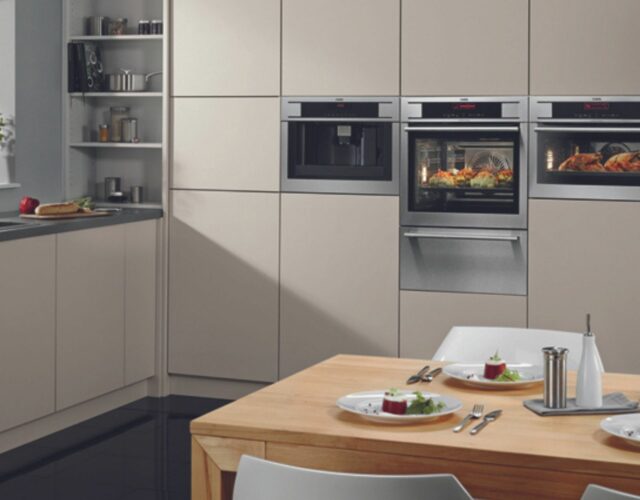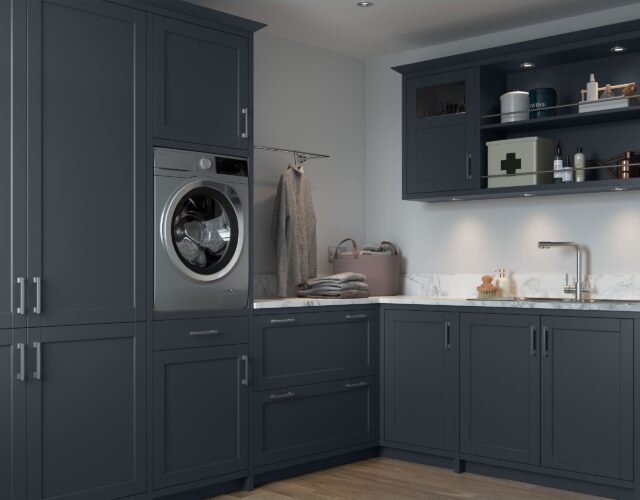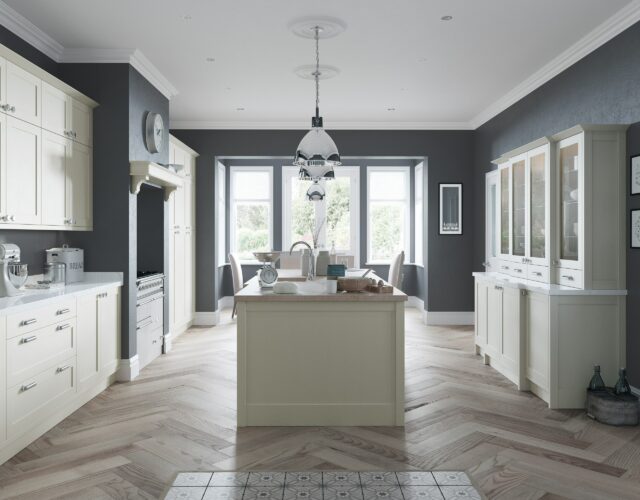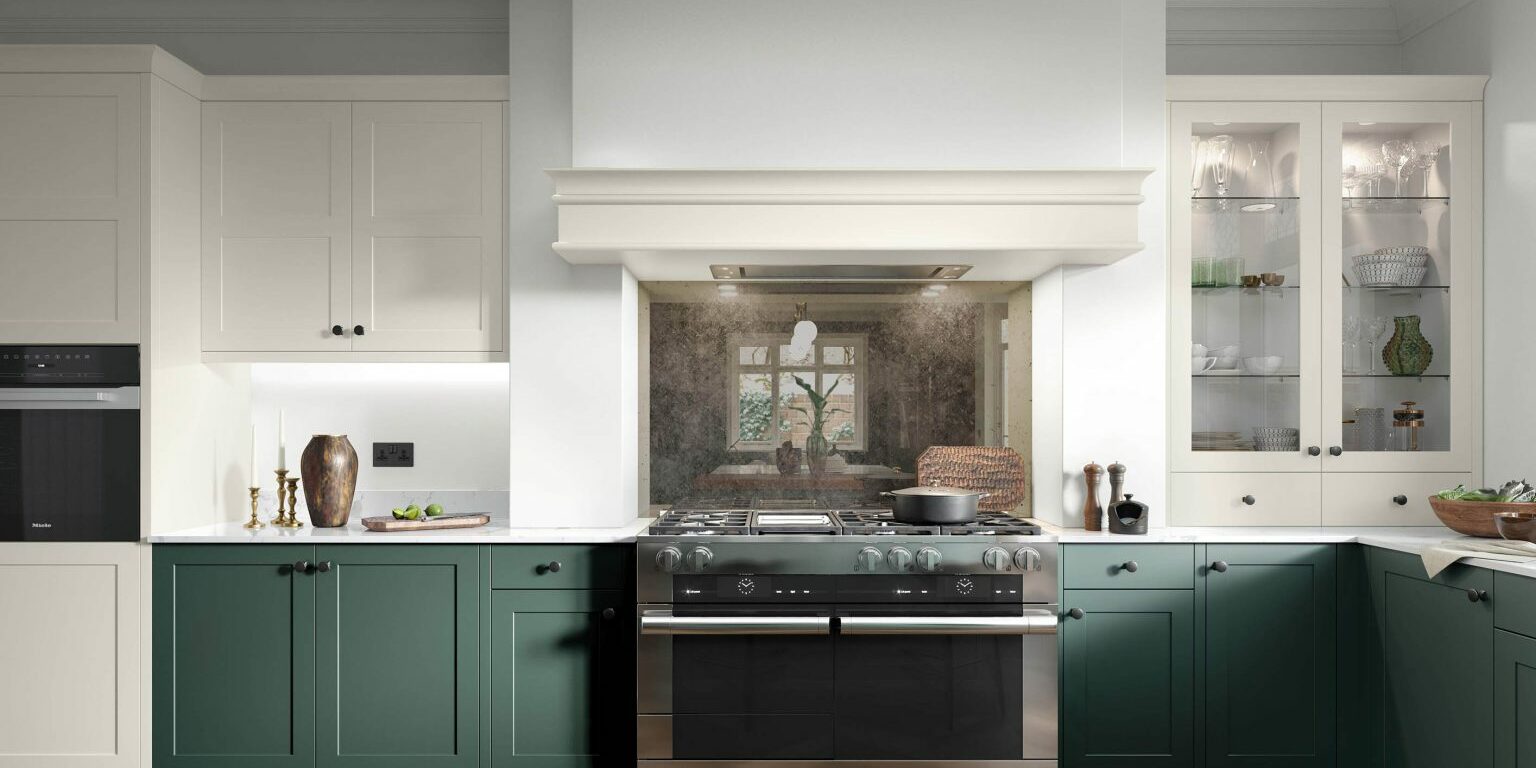

By Peter
What Type Of Splashback Is Best For Your Kitchen?
Your splashback might not be the first thing that springs to mind when planning your dream kitchen. However, splashbacks do, in fact, serve a crucial practical purpose. They protect your walls from humidity, grease, splashes, and spills, creating a durable and wipeable barrier. But there’s more than just practicality to consider when choosing a kitchen splashback. As well as performing a vital functional role, a beautiful splashback could transform the look and feel of your space. Since they sit at eye level, they naturally draw focus. Thus, the design you choose will have a dramatic impact on the overall mood of your room. Thankfully, there is a huge range of stylish and practical designs available to suit every budget and taste. Below we’ve outlined some of the pros and cons of each option to help you choose the best splashback material for your project.
Tiled Splashbacks
Ranging from cool, contemporary geometric designs to timeless and elegant metro tiles, there are hundreds of different styles available, allowing you to put a truly unique stamp on your interior.
The Advantages Of Tiled Splashbacks
- One of the biggest advantages of choosing a tiled splashback is the virtually unlimited array of designs you’ll find available. Tiles come in a huge range of sizes, shapes, and colours, from the vibrant and modern to the understated and traditional.
- Tiles come in a beautiful selection of finishes, including vintage crackle glazes, rustic terracotta, soft matt, shimmering gloss, and so much more!
- You can personalise your splashback by laying your chosen tiles in a quirky pattern, such as an on-trend herringbone arrangement or a diagonal layout.
- There are lots of different grout colours available to complement your tiles and add to the overall design. As well as traditional greys and beiges, you’ll also find a playful range of bright colours.
- Tiles make a practical choice if you have less than perfectly flat, straight walls.
- Tiles can suit a range of budgets. There are lots of affordable options.
- You can tile your walls as soon as your worktop is fitted, reducing the time required to complete your kitchen fit.
The Disadvantages Of Tiled Splashbacks
- While you might be tempted to choose the most trendy and eye-catching tiles now, in a few years’ time, they could leave your kitchen looking rather dated. Tiles can age a kitchen as different designs quickly go in and out of fashion.
- Light-coloured grout can discolour and stain over a long period of time. Thus, tiled splashbacks can take a little extra care to maintain.
- Exposed edges can look unsightly. Make sure you find an attractive trim to suit your chosen tile and achieve a clean finish.
- The additional labour involved in tiling can add to the cost of your splashback. Bear in mind complex patterns will take longer.
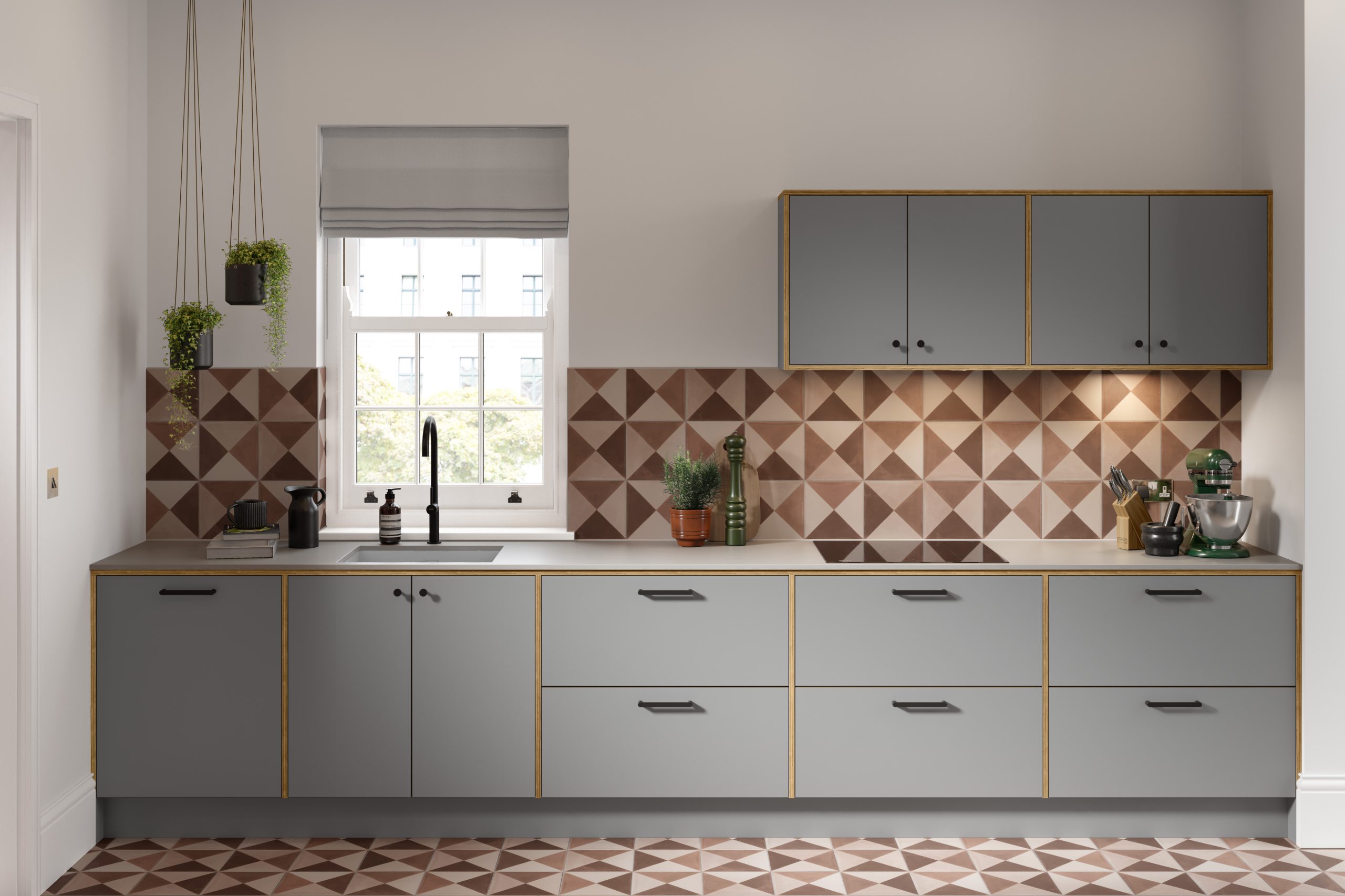
Glass Splashbacks
If you’re looking for a clean, slick, and long-lasting finish, glass splashbacks make an excellent choice.
The Advantages Of Glass Splashbacks
- Glass splashbacks and very durable and easy to wipe clean. Thus, they make a fantastic practical choice.
- As well as an extensive selection of colours to choose from, you can also customise your glass splashback by printing an image on the reverse. Glass splashbacks are ideal if you’re keen to add a touch of vibrancy and personality to your interior.
- Your chosen colour or pattern will remain intact almost indefinitely as it will be protected by a durable glass surface. Glass splashbacks are highly long-lasting.
- Glass splashbacks can be cost-effective and quick to install. Many homeowners opt to have a single sheet of glass fitted behind their hob. This is one of the easiest and most affordable splashback options.
The Disadvantages Of Glass Splashbacks
- Glass splashbacks can only be fitted to a straight/flat wall. This means you will need to take extra care when preparing the wall surface.
- Glass splashbacks are great if you’re planning to put a contemporary twist on your interior. However, they might not offer the best solution if you’re looking for something more characterful and traditional.
- Large glass splashbacks can be time-consuming and costly to install as they may need templating to fit complex areas and plug socket cut-outs.
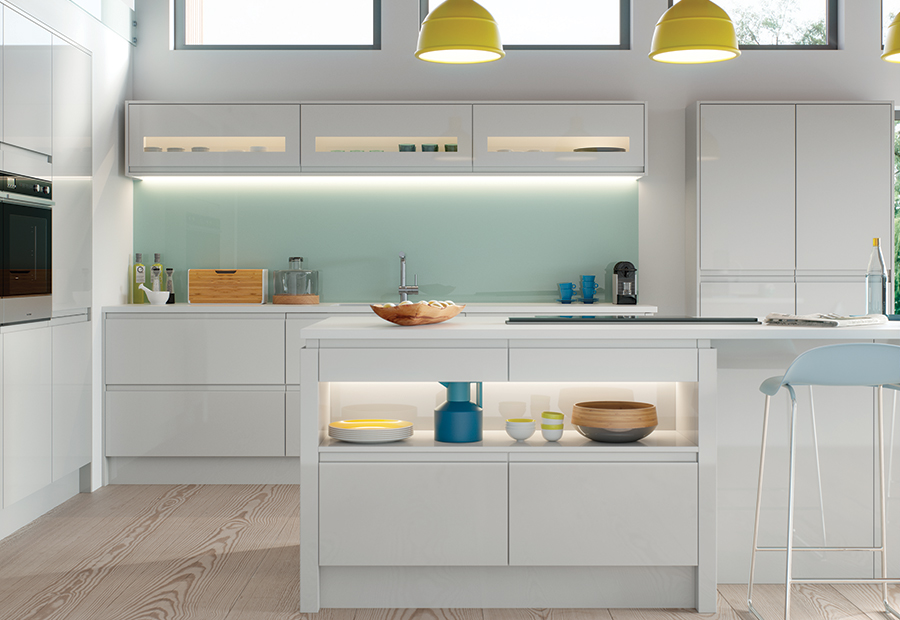
Mirrored Splashbacks
Mirrored or foxed mirror splashbacks are made from glass. Thus, they have similar technical properties. However, their reflective nature poses a unique set of benefits and considerations. On the one hand, they can create the illusion of a larger space. They will reflect light around your room, establishing an airy, open atmosphere. They also make a lovely choice if you’re looking to add a touch of glamour to your interior, with foxed/antique mirror splashbacks providing the perfect addition to more traditional settings. That being said, they do show up marks. So, you’ll need to clean them regularly if you intend to keep your kitchen looking pristine.
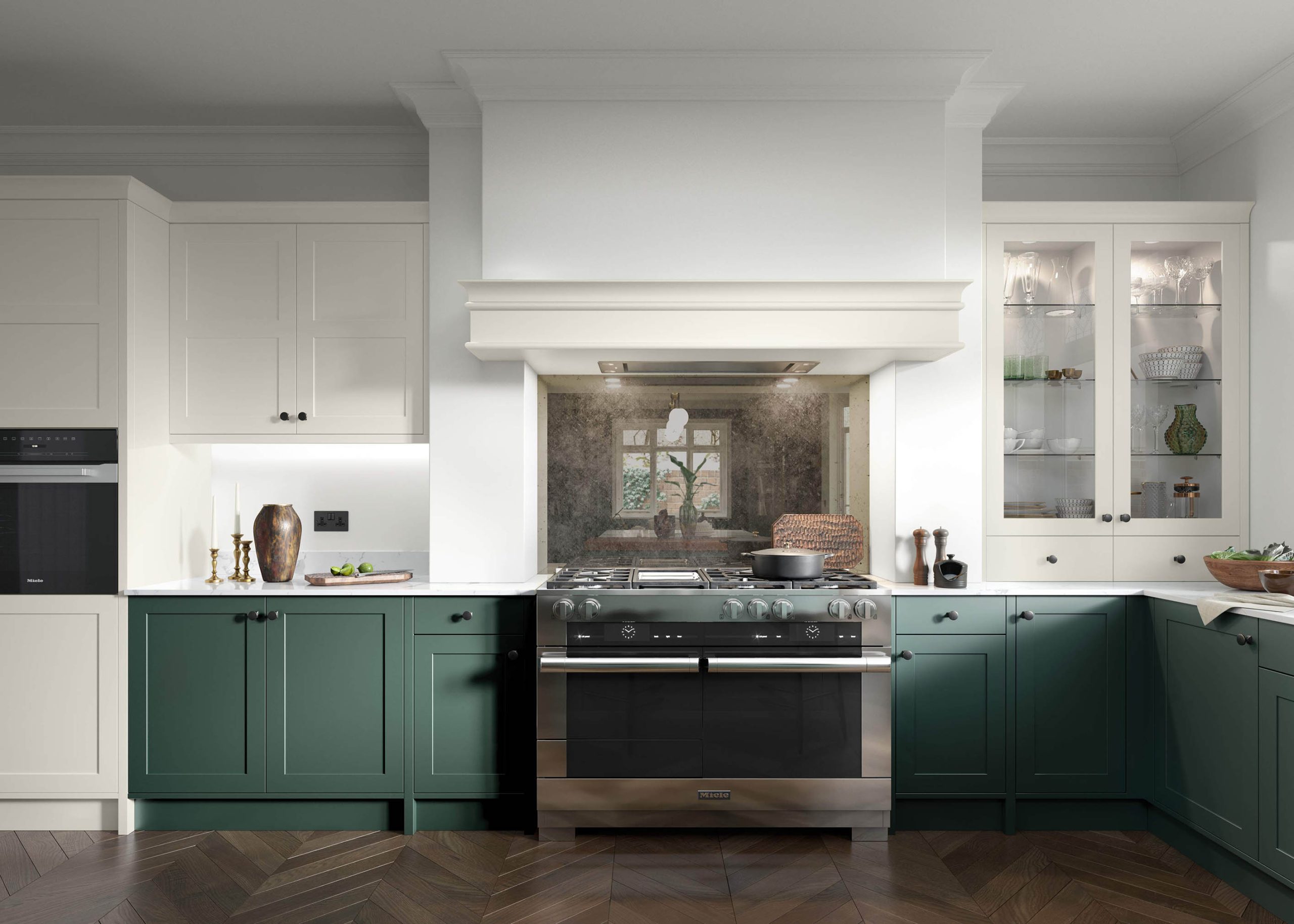
Quartz Splashbacks
Combining luxurious looks and exceptional durability, a quartz splashback is sure to make a breathtaking focal point to your kitchen. Quartz or composite stone is a manmade material produced by fusing particles of stone with a small amount of resin.
The Advantages Of Quartz Splashbacks
- Thanks to their luxurious and timeless appearance, slab splashbacks have really grown in popularity in recent years. They make an excellent choice for anyone looking to achieve an opulent and on-trend kitchen.
- Quartz splashbacks look stunning in modern and traditional settings alike.
- Quartz comes in a wide variety of colours and patterns, including gorgeous, deep-veined marble effect and shimmering granite.
- Since quartz is such an excellent worktop material, you can use it on your splashback and work surfaces to create a seamless transition. Opting for a matching splashback and worktop will bring a sleek and sophisticated look to your kitchen.
- Quartz is durable and easy to wipe clean. It makes a great practical choice.
The Disadvantages Of Quartz Splashbacks
- Quartz is a comparatively expensive material and will need professional templating and fitting. Thus, quartz splashbacks can be costly.
- As a solid sheet material, quartz splashbacks can only be installed against a perfectly straight and flat wall. So, you/your fitting team will need to dedicate extra care to prepare your walls.
- Templating quartz splashbacks can take around two weeks. However, if you are also having quartz worktops, this may not impact your completion date.
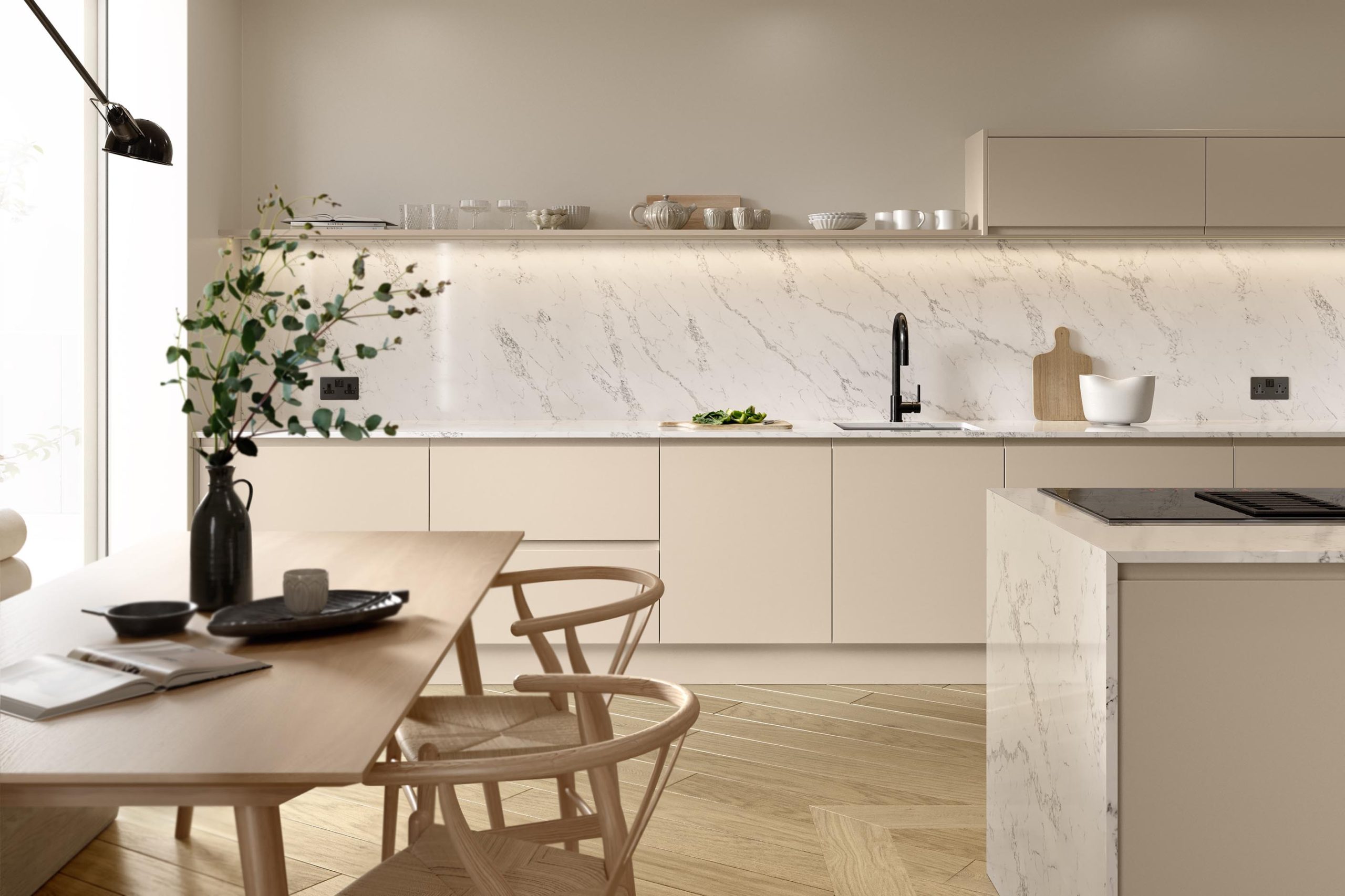
Acrylic/Corian Splashbacks
Acrylic/Corian is a composite material similar to quartz. Like quartz, acrylic surfaces often mimic the look of natural stones like marble or granite. However, unlike quartz, acrylic/Corian has a soft, warm-to-the-touch finish due to its high resin content.
The Advantages Of Acrylic Splashbacks
- As a material, acrylic offers great design flexibility. It can be thermo-formed to achieve different shapes and avoid the need for joins/seams.
- Acrylic/Corian splashbacks are easy to clean, highly stain-resistant and unlikely to chip.
- Like quartz, they can add a luxurious, seamless finishing touch to your kitchen.
The Disadvantages Of Acrylic Splashbacks
- Acrylic-coated splashbacks and worktops are relatively expensive.
- They can scratch easily. Although scratches can be professionally buffed out.
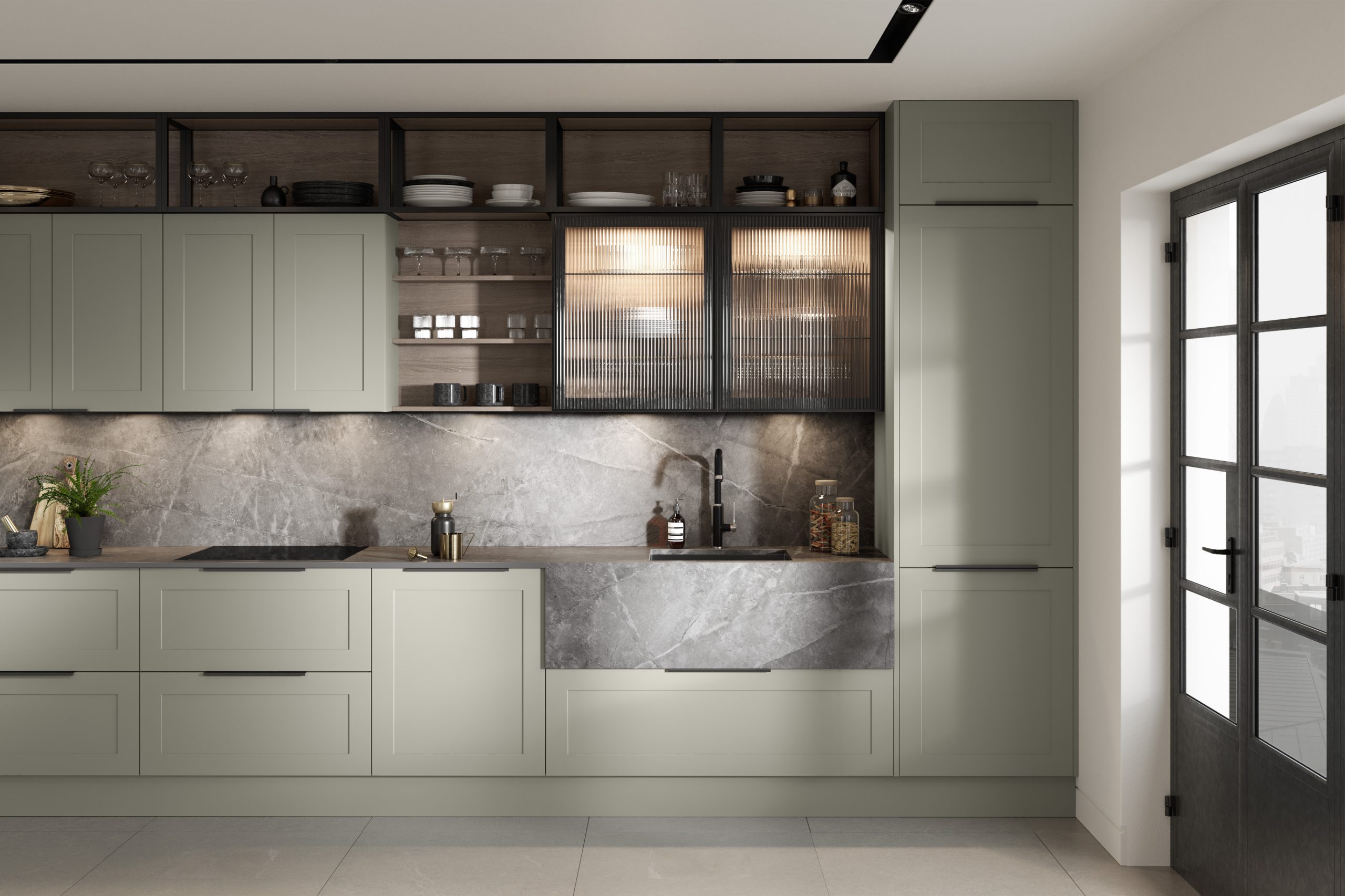
Stainless Steel/Metal Splashbacks
Stainless steel is often used in commercial settings due to its unrivalled practical capabilities. However, metallic finishes are becoming an increasingly popular design feature in many kitchens. An aged copper or brass splashback will make a stylish and characterful addition to your interior. Alternatively, stainless steel could make a fantastic industrial-inspired design statement.
The Advantages Of Metal Splashbacks
- Whether you opt for brushed copper, aged brass or sleek stainless steel, a metal splashback will make a showstopping design feature.
- Stainless steel is an incredibly practical material. It is easy to clean and won’t be affected by harsh chemicals.
- Metal splashbacks can be cost-effective and relatively simple to install.
The Disadvantages Of Metal Splashbacks
- Copper and brass can be affected by harsh chemicals and may require extra care to maintain.
- Metal splashbacks can be tricky to install around windowsills.
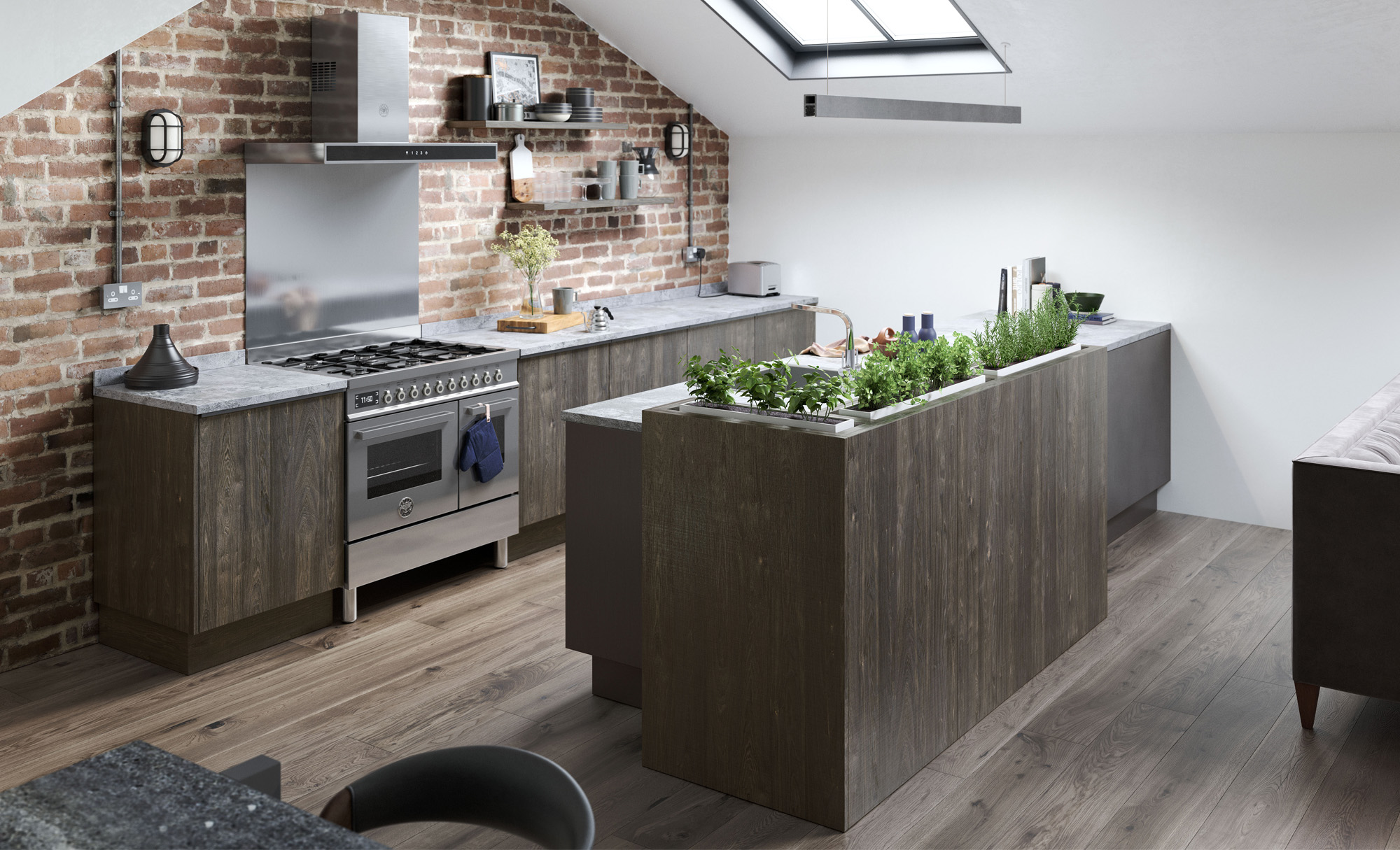
From quirky tiles to sleek and sophisticated slab splashbacks, there really is something to suit every taste. However, each material comes with its own set of considerations. Thus, you’ll need to think carefully about which option works best with your lifestyle and budget. If you would like to discuss your plans in more detail, please don’t hesitate to get in touch with our expert team. You can call us on 01634 799 909 or email design@ream.co.uk.


